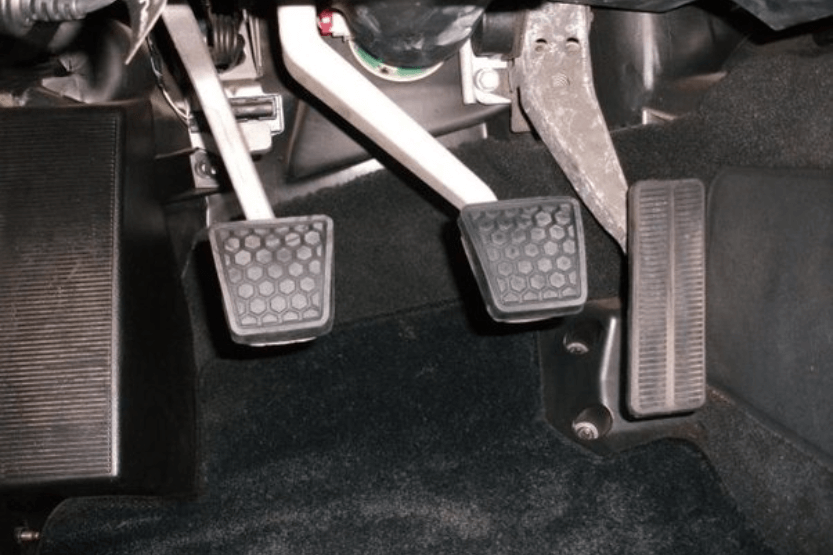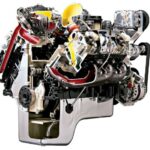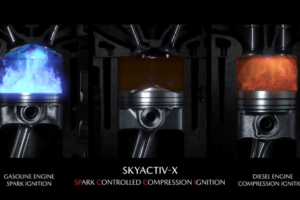Granny shifting is a term used to describe the technique of shifting gears in a manual car by pressing the clutch down, shifting the gear up or down one gear, and then slowly lifting the clutch while touching on the accelerator.
This is the way that most people learn to shift gears when they first learn to drive a manual car. While it may not be the most exciting way to shift gears, it is a practical and safe method that can be used for everyday driving.
Granny shifting is often contrasted with power-shifting, which is a technique used in drag racing to shift gears quickly and smoothly without lifting off the accelerator. Power-shifting requires a lot of skill and practice, and it can be dangerous if done incorrectly.
In contrast, granny shifting is a simple and safe way to shift gears that can be used by anyone who knows how to drive a manual car. While it may not be the fastest or most exciting way to drive, it is a reliable and practical method that can be used for everyday driving.
What is a Granny Shift?

In simple terms, granny shifting refers to the regular way of shifting gears up or down in a manual transmission car. It is the way that most people learn to shift gears when they first learn to drive a manual car.
When a driver shifts gears in a manual transmission car, they need to use the clutch pedal to disengage the engine from the transmission.
This allows the driver to change the gear ratio and match the engine speed with the road speed. In a granny shift, the driver shifts gears without rev-matching or double clutching.
Rev-matching involves blipping the throttle to match the engine speed with the road speed before shifting gears. Double clutching involves pressing the clutch pedal twice – once to disengage the engine from the transmission and once to engage it again in the new gear.
Granny shifting is a slower and less efficient way of shifting gears compared to rev-matching or double clutching.
It can cause the car to bog down when downshifting, which can be dangerous in certain situations. However, it is a simple and easy technique that is suitable for most everyday driving situations.
Overall, granny shifting is a basic manual transmission technique that most people learn when they first start driving a manual car. While it may not be the most efficient way of shifting gears, it is a simple and easy technique that is suitable for most everyday driving situations.
Is it Okay to Granny Shift?
Granny shifting is a perfectly acceptable way of shifting for everyday driving. It’s just how you would typically shift, like how you might have been taught from the start. However, it’s not the most efficient way to shift gears and can lead to a decrease in performance.
If you’re driving a high-performance car or racing, then granny shifting may not be the best option. In these situations, it’s recommended to use a more advanced shifting technique like double clutching or power shifting.
Granny shifting is also not recommended if you’re looking for a more exciting driving experience. It can be a bit boring and can take away from the fun of driving a manual car.
That being said, if you’re just driving around town or commuting to work, then granny shifting is perfectly fine. It’s a safe and reliable way to shift gears and won’t cause any harm to your car.
In summary, granny shifting is okay for everyday driving, but it’s not the best option if you’re looking for maximum performance or a more exciting driving experience.
The Role of Double Clutching
Double clutching is a driving technique that involves using the clutch pedal twice during a single shift between gears. It is a method that is commonly used in high-performance racing and in trucks with manual transmissions.
Double Clutching in Racing
As per Car Wow, in racing, double clutching is used to match the engine speed to the transmission speed when downshifting through turns. This technique allows the driver to maintain control of the vehicle and avoid locking up the wheels.
Double clutching is particularly useful in race cars with manual transmissions, as it helps to prevent damage to the drivetrain.
Double Clutching in Trucks
Double clutching is also commonly used in diesel semi-trucks with manual transmissions. These trucks have a lot of weight and require a lot of power to move, so double clutching helps to prevent damage to the drivetrain.
It is a technique that is particularly useful when the truck is carrying a heavy load or driving up a steep hill.
Difference Between Granny Shifting and Double Clutching
Granny shifting is a driving technique that involves upshifting or downshifting through the gears of a manual transmission normally. This means that there’s no rev-matching or double clutching happening through the shifts, which also means that the car will likely bog when downshifting.
Double clutching, on the other hand, involves engaging the clutch, shifting into neutral, releasing the clutch, revving the engine to match the speed of the next gear, engaging the clutch again, and shifting into the next gear.
It is a more advanced technique that requires more skill and practice than granny shifting.
In modern manual cars, double clutching is not necessary as most cars have synchronized transmissions that match the engine speed to the transmission speed automatically.
However, it is still a useful technique to know, especially for those who are interested in high-performance driving or driving trucks with manual transmissions.
The Mechanics of Shifting

Upshifting and Downshifting
Upshifting and downshifting are the two primary shifting techniques used in manual transmissions. Upshifting is the process of shifting from a lower gear to a higher gear, while downshifting is the opposite, shifting from a higher gear to a lower gear.
In order to upshift, the driver must first press the clutch pedal down, then move the shifter from its current gear to the next higher gear, and finally release the clutch pedal while simultaneously pressing the gas pedal.
Conversely, to downshift, the driver must first press the clutch pedal down, then move the shifter from its current gear to the next lower gear, and finally release the clutch pedal while simultaneously blipping the gas pedal.
Rev-Matching and Synchromesh
Rev-matching and synchromesh are two advanced shifting techniques that can be used to improve the smoothness and speed of shifting.
Rev-matching involves blipping the gas pedal to match the engine speed to the speed of the wheels, making the shift smoother and reducing wear on the clutch and transmission.
Synchromesh is a system of synchronizers that helps match the speed of the gears before they engage, making shifting smoother and easier.
The Role of the Clutch Pedal and Gas Pedal
The clutch pedal and gas pedal are two crucial components of the shifting process. The clutch pedal is used to disengage the engine from the transmission, allowing the driver to shift gears.
The gas pedal is used to control the speed of the engine, allowing the driver to match the speed of the engine to the speed of the wheels during shifting.
Overall, mastering the mechanics of shifting requires practice and patience. By understanding the various shifting techniques, including upshifting and downshifting, rev-matching, and synchromesh, drivers can become more confident and skilled in their shifting abilities.
Granny Shifting in Popular Culture

Granny shifting, a term used to describe the slow and inefficient shifting of gears in a manual transmission, has been a topic of discussion in popular culture. Here are some examples of how it has been portrayed in movies and its relevance in modern cars.
Granny Shifting in “The Fast and The Furious”
In the movie “The Fast and The Furious,” the character Dominic Toretto, played by Vin Diesel, criticizes Brian O’Conner, played by Paul Walker, for his granny shifting technique.
Dominic explains that it is a slow and inefficient way of shifting gears, and that to win races, one must use a technique called double-clutching.
Granny Shifting in Modern Cars
While granny shifting may have been acceptable in older cars, it is not the most efficient way of shifting gears in modern manual cars.
Modern manual cars have synchronized transmissions, which means that double-clutching is not necessary. However, it is still important to shift down while braking to avoid damaging the transmission.
Look, let me lay it out for you, and you can trust me on this – I’m a mechanic: while granny shifting might’ve been the way to go back in the day, it’s not the smartest move if you want to get the most out of your manual ride now.
These days, it’s all about double-clutching and nailing those gear shifts like a pro. That’s the secret sauce for winning races and keeping your modern manual car purring along for years to come.
To Sum Up
Granny shifting is a technique that is used to upshift while revs are still low. It is a technique used to prevent traction loss with powerful torque cars.
However, it is rare and generally unnecessary. This technique is not recommended for high-performance vehicles as it can cause damage to the engine and transmission over time.
Double clutching, on the other hand, is a technique that is used when downshifting. It involves pressing the clutch pedal twice, once to disengage the engine from the transmission, and a second time to engage the transmission in a lower gear.
This technique is used to match the engine speed to the wheel speed, preventing the car from jerking or lurching when shifting down.
While double clutching may seem like a complicated technique, it is actually quite simple once you get the hang of it. It is a technique that can be used in any manual transmission vehicle, but it is particularly useful in high-performance vehicles where smooth shifting is essential.
In summary, granny shifting and double clutching are two different techniques used in manual transmission vehicles. Granny shifting is used to upshift while revs are still low, while double clutching is used when downshifting to match the engine speed to the wheel speed.
While granny shifting is not recommended for high-performance vehicles, double clutching is a useful technique that can be used in any manual transmission vehicle.









